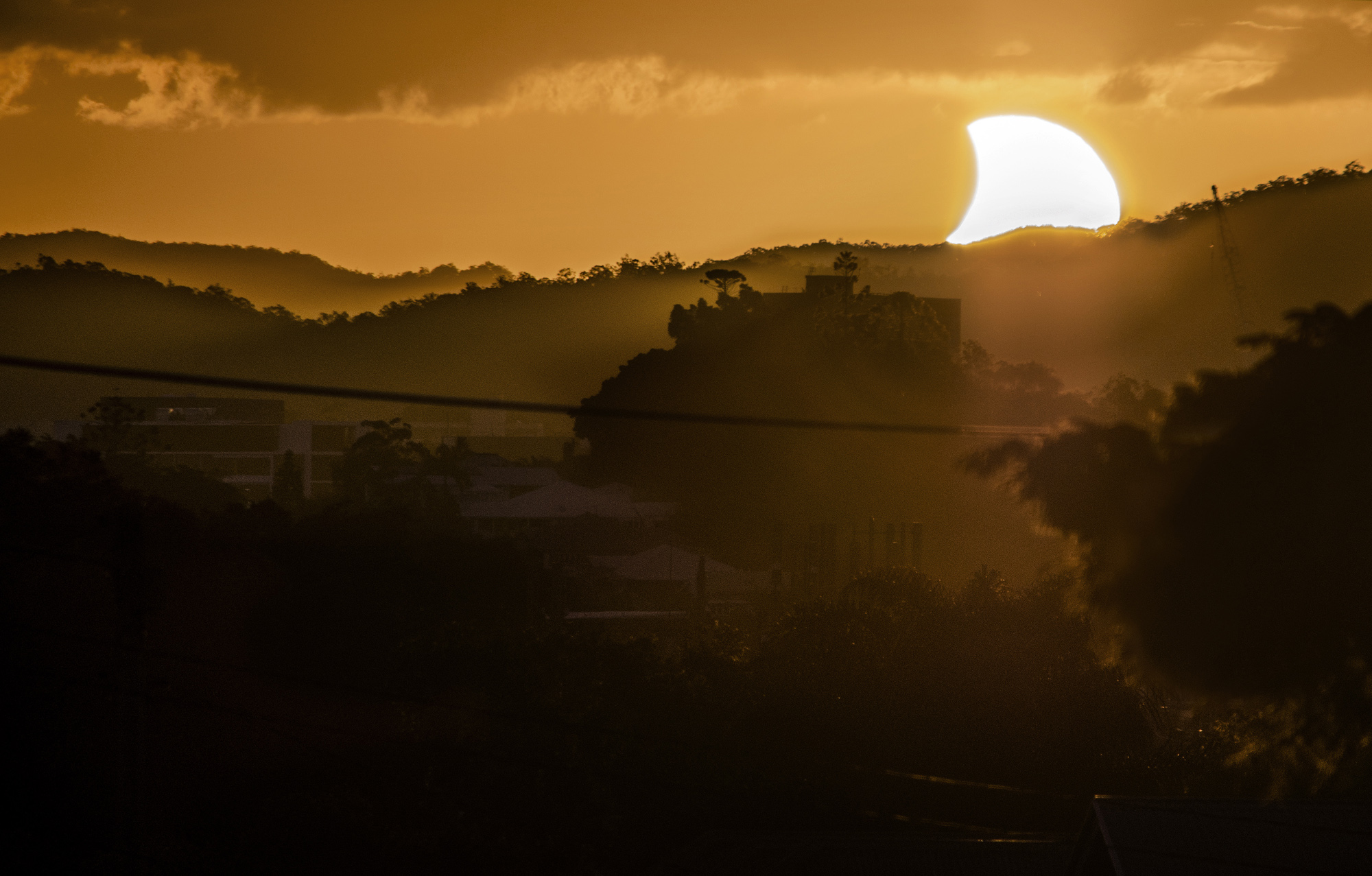Eclipse Glossary: Solar Eclipses, Lunar Eclipses and Their Terms
Eclipses occur when the sun or moon, depending on the situation, is obscured. Sometimes these eclipses are total and sometimes they are partial.
Astronomers use many terms to describe what happens during an eclipse, and this glossary shows some of the more common things they say. This glossary is based upon descriptions from NASA and the Canadian Space Agency.
Annular eclipse: A "ring of fire" solar eclipse that happens when the moon's size (as seen from Earth) is not quite big enough to cover the entire sun. This happens when the moon is at apogee, or the closest approach to Earth in its orbit.
Contacts: The four points of contact that happen during an eclipse. First contact takes place when the partial phase of the eclipse begins. Second contact takes place when a total or annular phase begins. Third contact takes place when the total or annular phase ends. Fourth contact takes place when the partial phase ends.
Corona: The tenuous upper atmosphere of the sun that is usually only visible if you use special filters while observing the sun. During a solar eclipse, however, the corona is visible because the moon blots the sun's disc out from the perspective of Earth.
Eclipse magnitude: During a solar eclipse, this describes the fraction of the sun's diameter obscured by the moon at the moment of greatest eclipse.
Eclipse obscuration: During a solar eclipse, this describes the fraction of the sun's area obscured by the moon at the moment of greatest eclipse.
Breaking space news, the latest updates on rocket launches, skywatching events and more!
Eye safety: The only time that the sun can be viewed safely with the naked eye is during a total eclipse, when the moon completely covers the disk of the sun. It is never safe to look at a partial or annular eclipse, or the partial phases of a total solar eclipse, without the proper equipment and techniques. The safest way to view a solar eclipse is to construct a pinhole camera or pinhole mirror. Acceptable filters include aluminized Mylar or shade 14 arc-welder’s glass. Unacceptable filters include sunglasses, old color film negatives, black-and-white film that contains no silver, photographic neutral-density filters and polarizing filters. [Video: Safely View an Eclipse]
Hybrid eclipse: When a solar eclipse appears as annular and total, depending on where you're standing along its track. "In most cases, hybrid eclipses begin as annular, transform into total, and then revert back to annular before the end of their track," NASA wrote. "In rare instances, a hybrid eclipse may begin annular and end total, or vice versa."
Lunar eclipse: When the moon passes into the Earth's shadow. The moon appears to turn red because light from Earth's atmosphere — showing all the sunrises and sunsets at once — reflects back on to the moon.
Partial eclipse: When the moon and the sun (solar eclipse), or the moon and the Earth (lunar eclipse), are not perfectly aligned and only part of the moon or sun is obscured during the eclipse.
Penumbra: The lighter, outer part of a shadow seen during an eclipse. Sometimes an eclipse takes place with the penumbra only, meaning that the eclipse is partial only.
Saros cycle: A cycle describing how often and when solar and lunar eclipses happen. The cycle lasts about 18 years and describes the relative geometry of the moon, sun and Earth with regard to eclipses. It was first known by ancient Babylonian astronomers.
Solar eclipse: When the moon passes between the sun and Earth, blotting out some or all of the light from the sun.
Totality: The zone from Earth where a lunar or solar eclipse is visible. In general, lunar eclipses are visible anywhere where the sky is dark and clear. Solar eclipses are only visible in a very small area on the Earth. Total solar eclipses can last as long as 7 minutes and 32 seconds.
Umbra: The central, darker part of a shadow seen during an eclipse. If the umbra covers the moon or sun from Earth's perspective, a total eclipse occurs.
Learn more about eclipses
Related articles:
- Solar Eclipse: What Is a Total Eclipse and When Is the Next One?
- Total Solar Eclipses: How Often Do They Occur (and Why?)
- Lunar Eclipses: What Are They and When Is the Next One?
- Solar Eclipses of 2014: Complete Coverage
Related galleries:
- Total Solar Eclipse Images
- Amazing Solar Eclipse Photos
- Lunar Eclipse Pictures
- More Lunar Eclipse Pictures
- Still More Lunar Eclipse Pictures
- And Even More Lunar Eclipse Pictures
Related Infographics:
Related Video:

Elizabeth Howell (she/her), Ph.D., was a staff writer in the spaceflight channel between 2022 and 2024 specializing in Canadian space news. She was contributing writer for Space.com for 10 years from 2012 to 2024. Elizabeth's reporting includes multiple exclusives with the White House, leading world coverage about a lost-and-found space tomato on the International Space Station, witnessing five human spaceflight launches on two continents, flying parabolic, working inside a spacesuit, and participating in a simulated Mars mission. Her latest book, "Why Am I Taller?" (ECW Press, 2022) is co-written with astronaut Dave Williams.



